
The Katipunan, officially the Kataastaasan Kagalang-galang na Katipunan ng mga Anak ng Bayan(lit. 'Supreme and Honorable Association of the Children of the Nation'; Spanish: Suprema y Honorable Asociación de los Hijos del Pueblo) and abbreviated as the KKK, was a revolutionary organization founded in 1892 by a group of Filipino nationalists Deodato Arellano, Andrés Bonifacio, Valentin Diaz, Ladislao Diwa, José Dizon, and Teodoro Plata. Its primary objective was achieving independence from the Spanish Empire through an armed revolution. It was formed as a secret society before its eventual discovery by Spanish authorities in August 1896. This discovery led to the start of the Philippine Revolution.
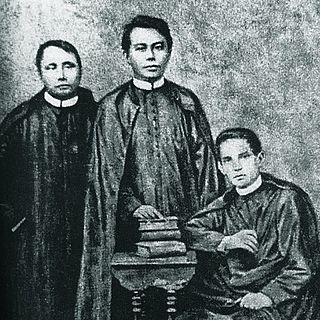
Gomburza, alternatively stylized as GOMBURZA or GomBurZa, refers to three Filipino Catholic priests, Mariano Gómez, José Burgos, and Jacinto Zamora, who were executed by garrote on February 17, 1872, in Bagumbayan, Philippines by Spanish colonial authorities on charges of subversion arising from the 1872 Cavite mutiny. The name is a portmanteau of the priests' surnames.

The Philippine Revolution was a war of independence waged by the revolutionary organization Katipunan against the Spanish Empire from 1896 to 1898. It was the culmination of the 333-year colonial rule of Spain to the archipelago. The Philippines were among the last colonies of the Spanish Empire, which saw a massive decline particularly in the 1890s. Cuba rebelled in 1895, and the empire soon fought against the United States in a war that they lost. In June 1898, Philippine revolutionaries declared itself a republic. However, this was not recognized by Spain, which sold the islands to the United States in the Treaty of Paris.

Filipino nationalism refers to the establishment and support of a political identity associated with the modern nation-state of the Philippines, leading to a wide-ranging campaign for political, social, and economic freedom in the Philippines. This gradually emerged from various political and armed movements throughout most of the Spanish East Indies—but which has long been fragmented and inconsistent with contemporary definitions of such nationalism—as a consequence of more than three centuries of Spanish rule. These movements are characterized by the upsurge of anti-colonialist sentiments and ideals which peaked in the late 19th century led mostly by the ilustrado or landed, educated elites, whether peninsulares, insulares, or native (Indio). This served as the backbone of the first nationalist revolution in Asia, the Philippine Revolution of 1896. The modern concept would later be fully actualized upon the inception of a Philippine state with its contemporary borders after being granted independence by the United States by the 1946 Treaty of Manila.
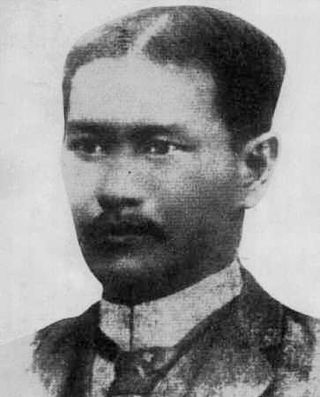
Graciano López y Jaena, commonly known as Graciano López Jaena, was a Filipino journalist, orator, reformist, and national hero who is well known for his newspaper, La Solidaridad (December 13,1888.

The Order of Augustinian Recollects (OAR) is a mendicant Catholic religious order of friars and nuns. It is a reformist offshoot from the Augustinian hermit friars and follows the same Rule of St. Augustine. They have also been known as the "Discalced Augustinians".
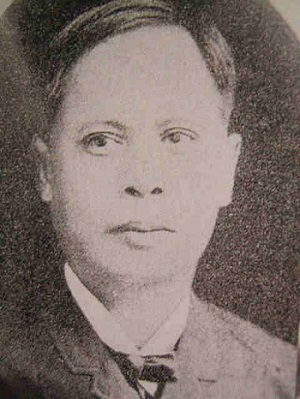
Deodato Arellano y de la Cruz was a Filipino propagandist and the first president of the Katipunan, which was founded at his home in Azcarraga Street, Manila. He was first to be given the title Supremo by the Katipunan. After studying bookkeeping in Ateneo de Municipal de Manila, he became an assistant clerk for the Spanish military. He was a member of the Freemasonry in the Philippines and became involved in the Propaganda Movement.
Román Bása was a Filipino patriot who was the second Supremo or leader of the Katipunan, the secret society which sparked the Philippine Revolution against Spanish rule in 1896.

The Cavite mutiny was an uprising of Filipino military personnel of Fort San Felipe, the Spanish arsenal in Cavite, Philippine Islands on January 20, 1872. Around 200 locally recruited colonial troops and laborers rose up in the belief that it would elevate to a national uprising. The mutiny was unsuccessful, and government soldiers executed many of the participants and began to crack down on a burgeoning Philippines nationalist movement. Many scholars believed that the Cavite mutiny was the beginning of Filipino nationalism that would eventually lead to the Philippine Revolution of 1896.

The Ilustrados constituted the Filipino intelligentsia during the Spanish colonial period in the late 19th century. Elsewhere in New Spain, the term gente de razón carried a similar meaning.
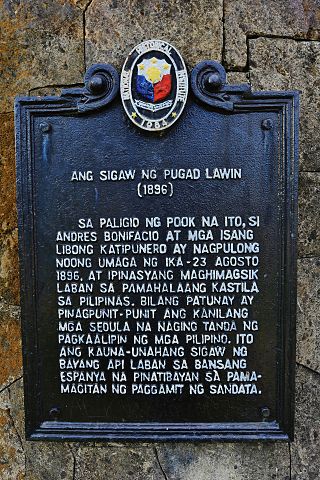
The Cry of Pugad Lawin was the beginning of the Philippine Revolution against the Spanish Empire.

The history of the Philippines from 1565 to 1898 is known as Spanish colonial period, during which the Philippine Islands were ruled as the Captaincy General of the Philippines within the Spanish East Indies, initially under the Viceroyalty of New Spain, based in Mexico City, until the independence of the Mexican Empire from Spain in 1821. This resulted in direct Spanish control during a period of governmental instability there. The Philippines was under direct royal governance from 1821 to 1898.
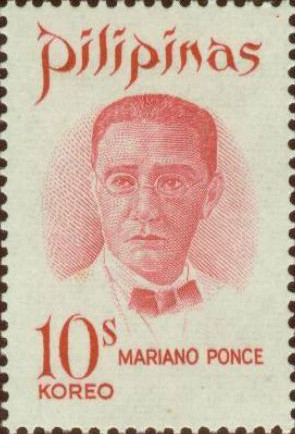
Mariano Ponce y Collantes commonly known as just Mariano Ponce was a Filipino physician, writer, statesman, and active member of the Propaganda Movement. In Spain, he was among the founders of La Solidaridad and Asociación Hispano-Filipino. Among his significant works was Efemerides Filipinas, a column on historical events in the Philippines which appeared in La Oceania Española (1892–1893) and El Ideal (1911–1912). He wrote Ang Wika at Lahi (1917), a discussion on the importance of a national language. He also served as Bulacan's representative to the Philippine Assembly from 1909 to 1912.
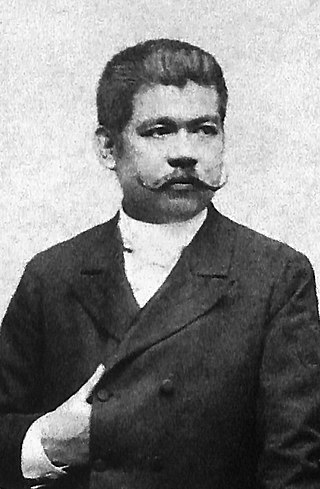
Marcelo Hilario del Pilar y Gatmaitán, commonly known as Marcelo H. del Pilar and also known by his nom de plumePláridel, was a Filipino writer, lawyer, journalist, and freemason. Del Pilar, along with José Rizal and Graciano López Jaena, became known as the leaders of the Reform Movement in Spain.
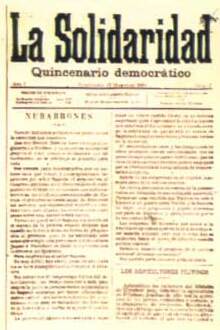
La Solidaridad was an organization created in Spain on December 13, 1888. Composed of Filipino liberals exiled in 1872 and students attending Europe's universities, the organization aimed to increase Spanish awareness of the needs of its colony, the Philippines, and to propagate a closer relationship between the Philippines and Spain.
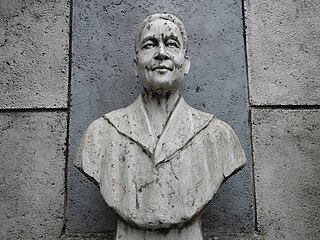
Gregorio Sancianco y Goson was a lawyer and early advocate of economic reforms in the Philippines, which was then under Spanish rule. He was among the first generation of the Propaganda Movement, the lobby for political and economic reforms spearheaded by educated Filipinos (ilustrados) based in Spain in the second half of the 19th century. Sancianco is considered as the "first Filipino economist".
This is the timeline of the El Filibusterismo . It contains details before and after public of El Filibusterismo.
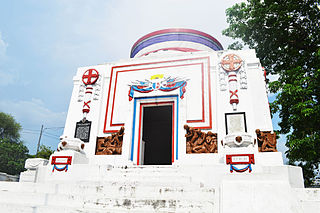
The Mausoleum of the Veterans of the Revolution is a memorial and national monument dedicated to Filipino revolutionaries of the Philippine Revolution of the 1890s and the Philippine–American War situated inside the Manila North Cemetery in Manila, Philippines.
Anarchism in the Philippines has its roots in the anti-colonial struggle against the Spanish Empire, becoming influential in the Philippine Revolution and the country's early trade unionist movement. After being supplanted by Marxism-Leninism as the leading revolutionary tendency during the mid-20th century, it experienced a resurgence as part of the punk subculture, following the fragmentation of the Communist Party of the Philippines.

The secularization movement in the Philippines under Spanish colonial administration from the 18th to late 19th century advocated for greater rights for native Filipino Catholic clergymen. The movement had significant implications to Filipino nationalism and the Philippine Revolution.


















